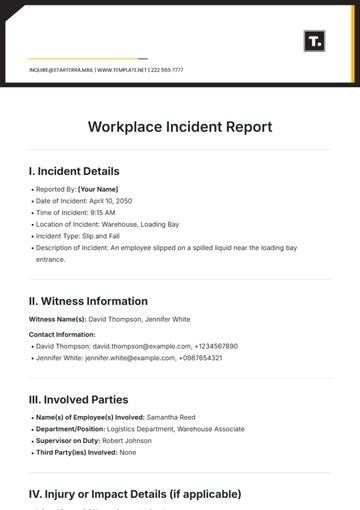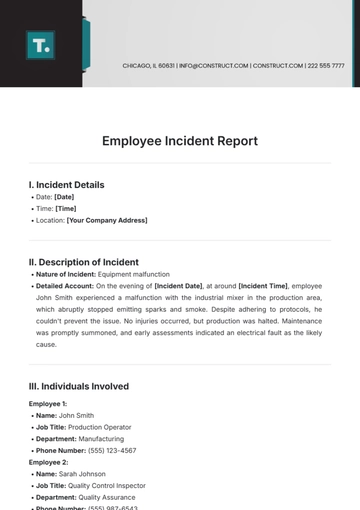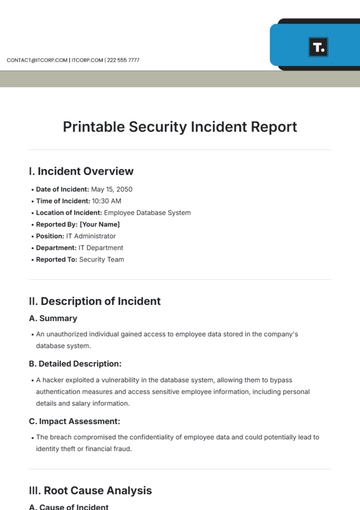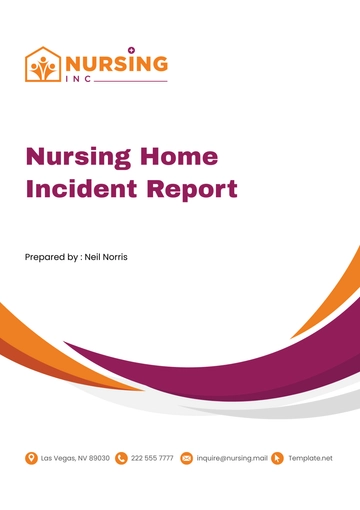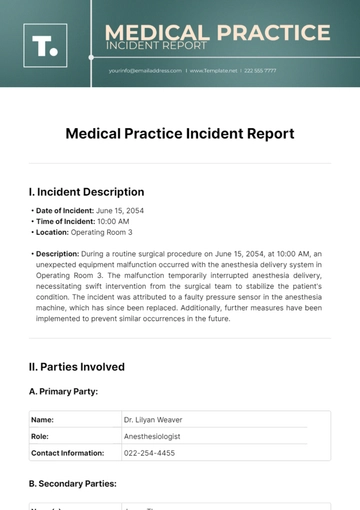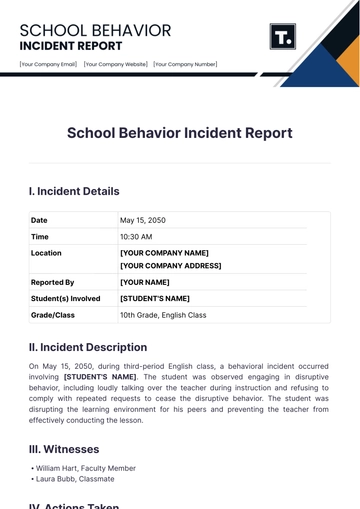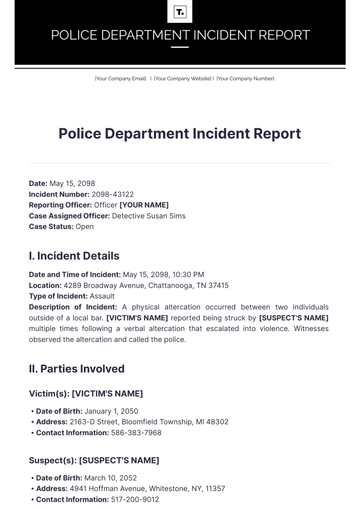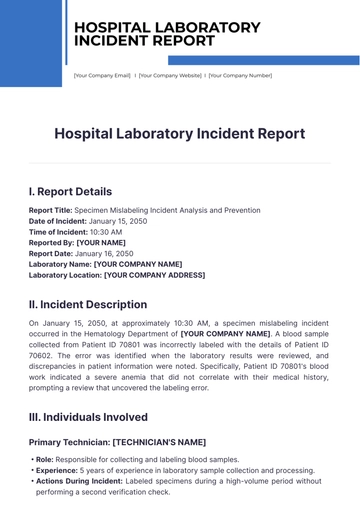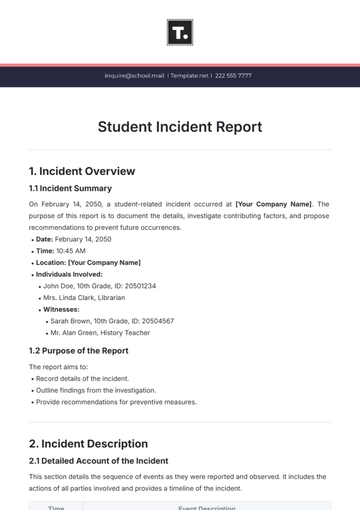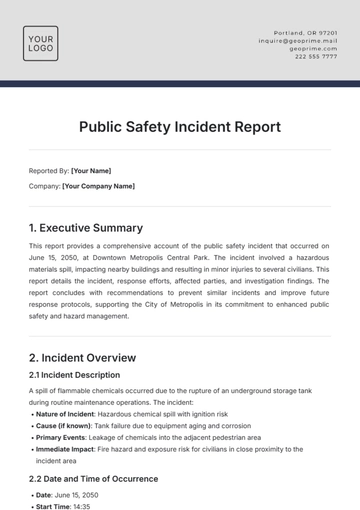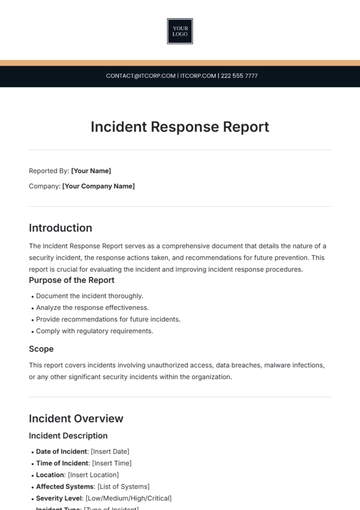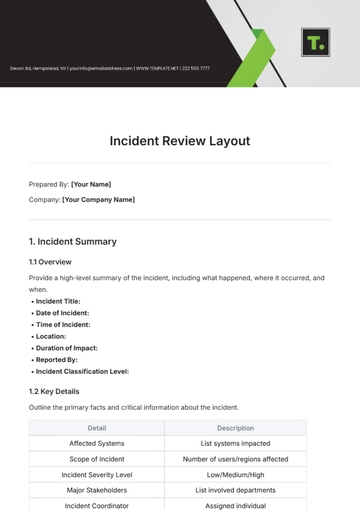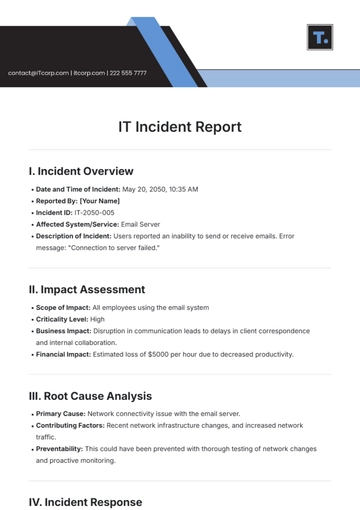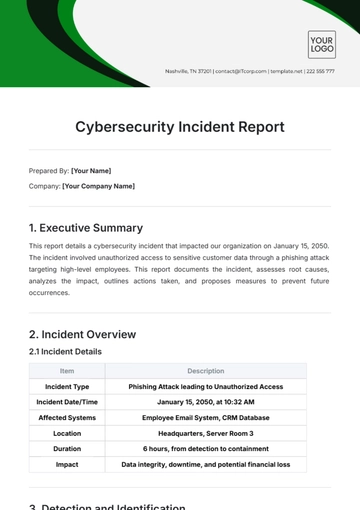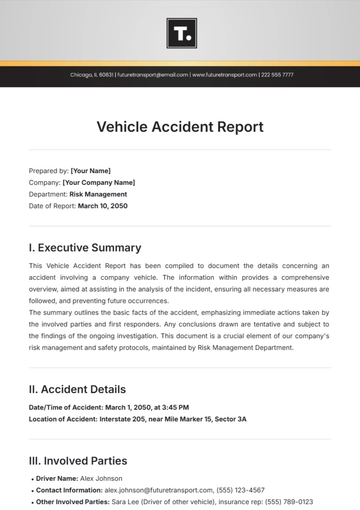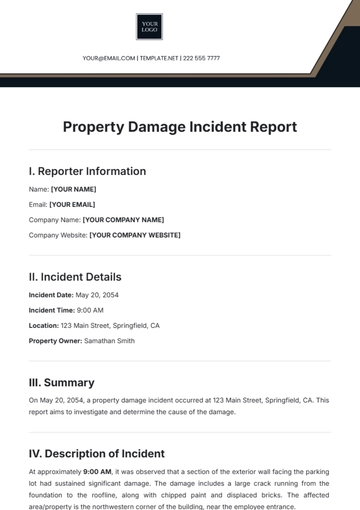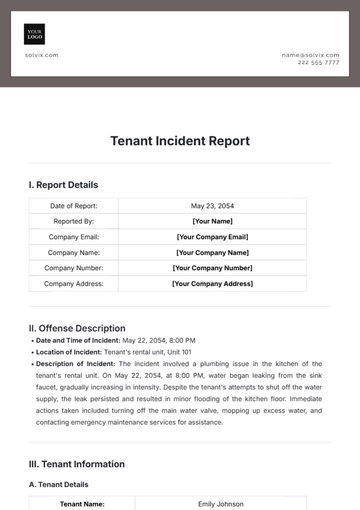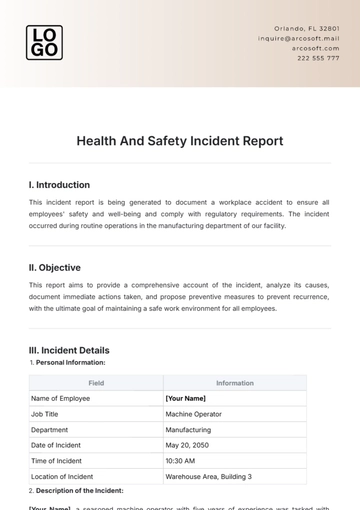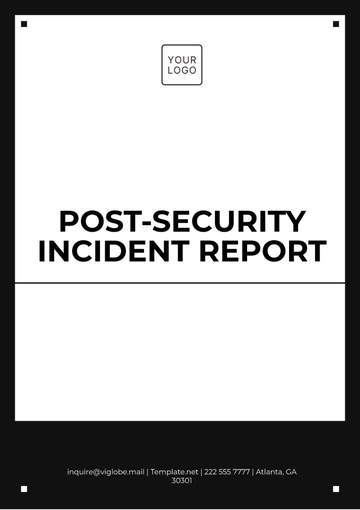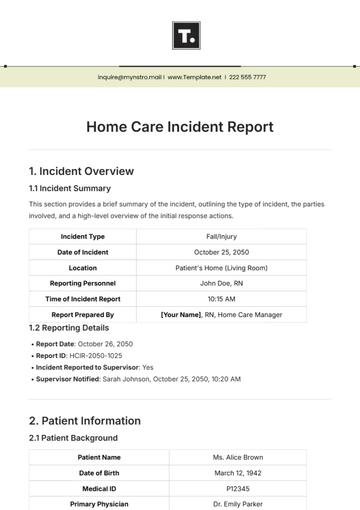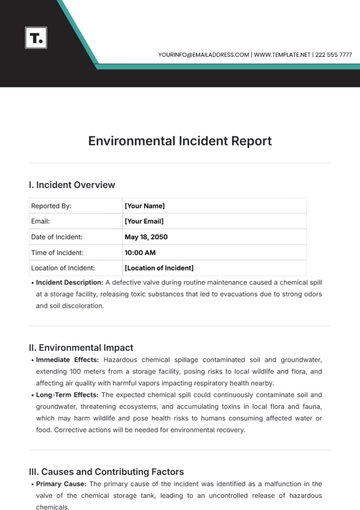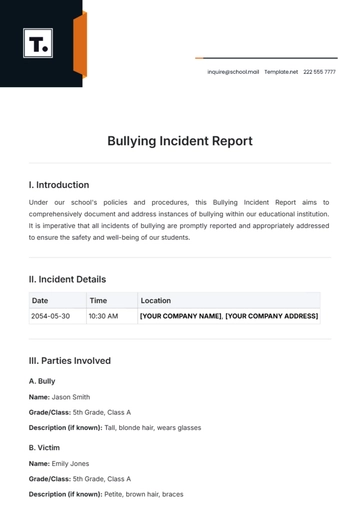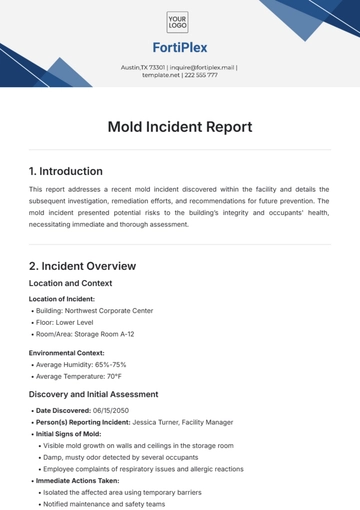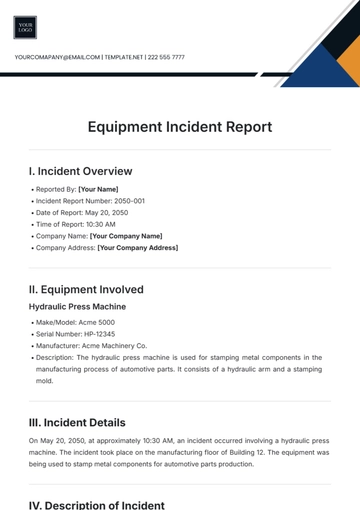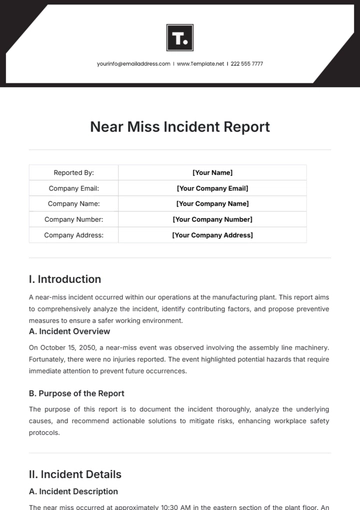Security Incident Report
Company: | [YOUR COMPANY NAME] |
Prepared by: | [YOUR NAME] | Department: | [YOUR DEPARTMENT] |
I. Introduction
The Security Incident Report provides a comprehensive overview of a security incident that has occurred within [YOUR COMPANY NAME]. The purpose of this report is to document the incident, its impact, and the actions taken in response. This report aims to ensure transparency, accountability, and continuous improvement in our security practices.
II. Incident Details
A. Incident Overview
Incident ID: [INCIDENT ID]
Date and Time of Incident: [DATE AND TIME]
Location: [LOCATION OF INCIDENT]
Description: [BRIEF DESCRIPTION OF THE INCIDENT]
B. Impact Assessment
Affected Systems: [LIST OF AFFECTED SYSTEMS]
Data Compromised: [TYPE OF DATA COMPROMISED]
Impact on Operations: [IMPACT ON BUSINESS OPERATIONS]
Severity Level: [SEVERITY LEVEL OF THE INCIDENT]
III. Methodology
The methodology section outlines the approach used to investigate and respond to the security incident. It includes:
Incident Detection: Description of how the incident was detected, whether through automated alerts, user reports, or other means.
Response Plan: Overview of the incident response plan followed, including the roles and responsibilities of team members involved.
Forensic Analysis: Details of any forensic analysis conducted to determine the root cause and extent of the incident.
Containment Measures: Description of the measures taken to contain the incident and prevent further damage or unauthorized access.
Evidence Preservation: Explanation of how evidence related to the incident was preserved to support further investigation and potential legal action.
IV. Findings
The findings section presents the results of the investigation into the security incident. It includes:
Timeline of Events: Chronological sequence of events leading up to and following the incident.
Vulnerability Assessment: Identification of any vulnerabilities or weaknesses in security controls that contributed to the incident.
Attack Vector: Analysis of the methods used by the attacker to exploit vulnerabilities and gain unauthorized access.
Extent of Damage: Assessment of the impact of the incident on systems, data, and operations.
V. Analysis
The analysis section interprets the findings of the investigation to provide insights into the causes and implications of the security incident. It includes:
Root Cause Analysis: Identification of the underlying factors that allowed the incident to occur.
Risk Assessment: Evaluation of the potential risks and consequences associated with the incident.
Lessons Learned: Analysis of the lessons learned from the incident and recommendations for improving security practices.
VI. Recommendations
Based on the analysis of the security incident, the recommendations section provides actionable recommendations for mitigating risks, strengthening security controls, and preventing similar incidents in the future. Recommendations may include:
Security Controls Enhancement: Implementing additional security measures, such as encryption, access controls, or intrusion detection systems.
Employee Training: Providing security awareness training to employees to improve their understanding of security threats and best practices.
Incident Response Plan Improvement: Updating the incident response plan to address any gaps or deficiencies identified during the incident.
VII. Conclusion
In conclusion, the Security Incident Report serves as a vital tool for understanding, responding to, and learning from security incidents within [YOUR COMPANY NAME]. By documenting the incident, analyzing its causes and implications, and providing recommendations for improvement, we aim to enhance our security posture and protect our organization from future threats.
Report Templates @ Template.net

